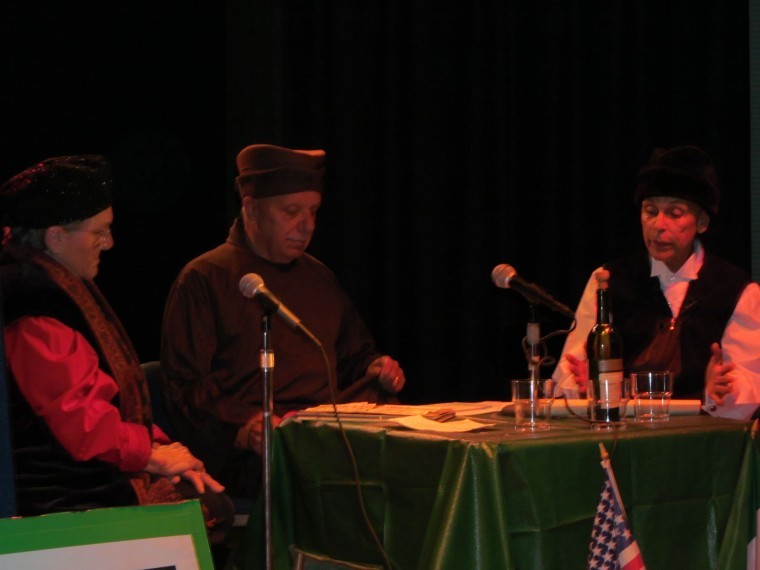Famed 15th century mapmaker Amerigo Vespucci was honored by the New Hyde Park Sons of Italy Cellini Lodge last Thursday night at its annual Italian heritage observance for his contributions to the discovery of the American continent. Vespucci and Christopher Columbus crossed paths, historically and as business associates, as explorers in the quest to find a western sea route from Europe to Asia.
The fact of their relationship as contemporaries during the 1490s was the subject of “A Tribute to Amerigo Vespucci and the Naming of Our Country” in a vignette presented at the William Gill Theater in New Hyde Park Village Hall on Oct. 11.
The historically based scene also marked the Cellini Lodge’s commemoration of Columbus Day.
“It’s important to remember Italian-Americans and Italians in this country and everything they’ve done to contribute to the forming of this country,” Luigi Squillante, president of the Cellini Lodge, said about the annual observance.
In the vignette, written by lodge member Jean Gagliardo and directed by Kathleen Mucciolo, Mucciolo portrayed Vespucci meeting with Columbus and Martin Waldseemuller, who famously printed Vespucci’s map of the new world bearing the name “Amerigo” and christening a continent. The map was published with an account of Vespucci’s own exploration of the Brazilian coast in the late 1490s – and his assertion that the new land was not the coast of Asia.
Gagliardo’s vignette presented an amicable dialogue between the famous cartographer and Columbus, with Vespucci telling Columbus he hadn’t intended to undermine Columbus’s discovery of the West Indies with what he’d published.
“I am glad you agree that the new world should be called ‘Mondus Nova’,” Vespucci told Columbus.
But the two agreed to disagree on whether Columbus had reached Asia.
“I still think I reached India and Asia,” said Columbus, played by Thomas Giacomaro.
In the scene, Columbus acknowledged Vespucci’s inclusion of longitude and latitude lines on his maps as aids to navigation.
After the performance, Gagliardo told members of the Cellini Lodge and others in attendance at the performance that she created the piece after consulting four different historical sources and culling information common to each source.
“This is history,” she told the audience.
Vespucci wrote a letter entitled “Mondus Nova” (“new world”) about his voyage to the American continent in 1501. He was an observer on the first voyage to South America from Portugal in 1499 and provided beef provisions for at least one of Columbus’s cross-Atlantic voyages after his celebrated 1492 voyage.
“He played an important role in our Italian history,” Mucciolo said of Vespucci. “And there are questions about who found what first.”
Squillante acknowledged the criticism Columbus has received from historians who have chronicled his cruel treatment of the natives he encountered on his voyages. But he said it’s “disgraceful” to denigrate the explorer’s accomplishment in judging him by contemporary moral standards.
“We as Italian Americans have to keep the memory alive of the contributions of all Italians, especially Columbus,” Squillante said.



